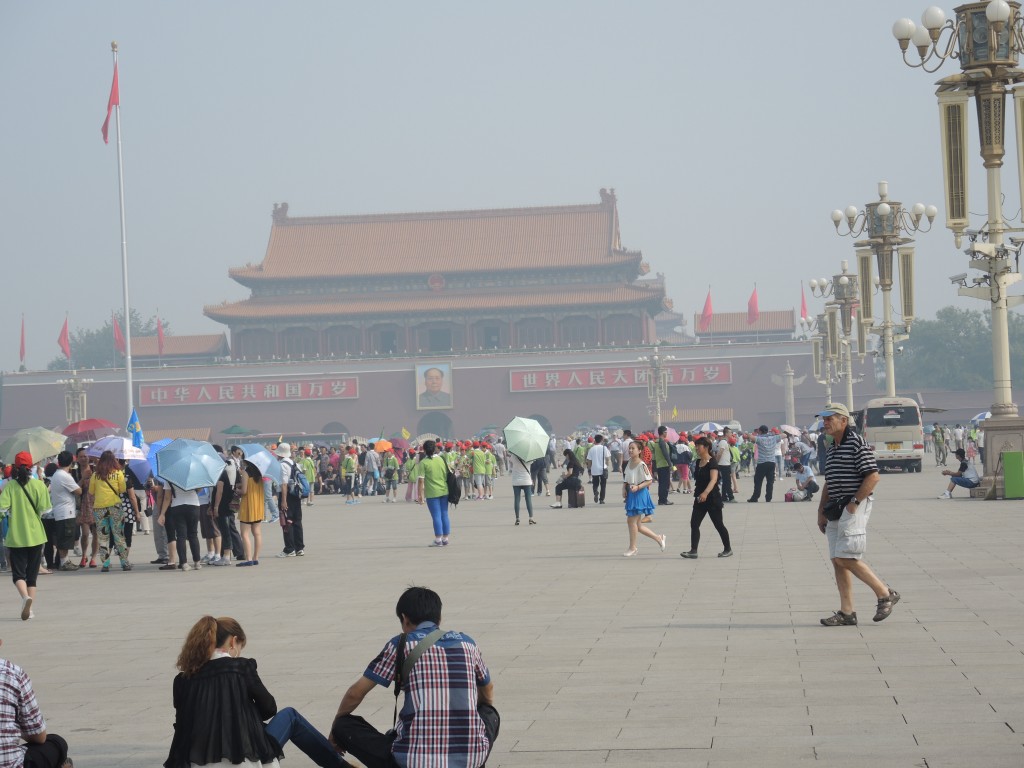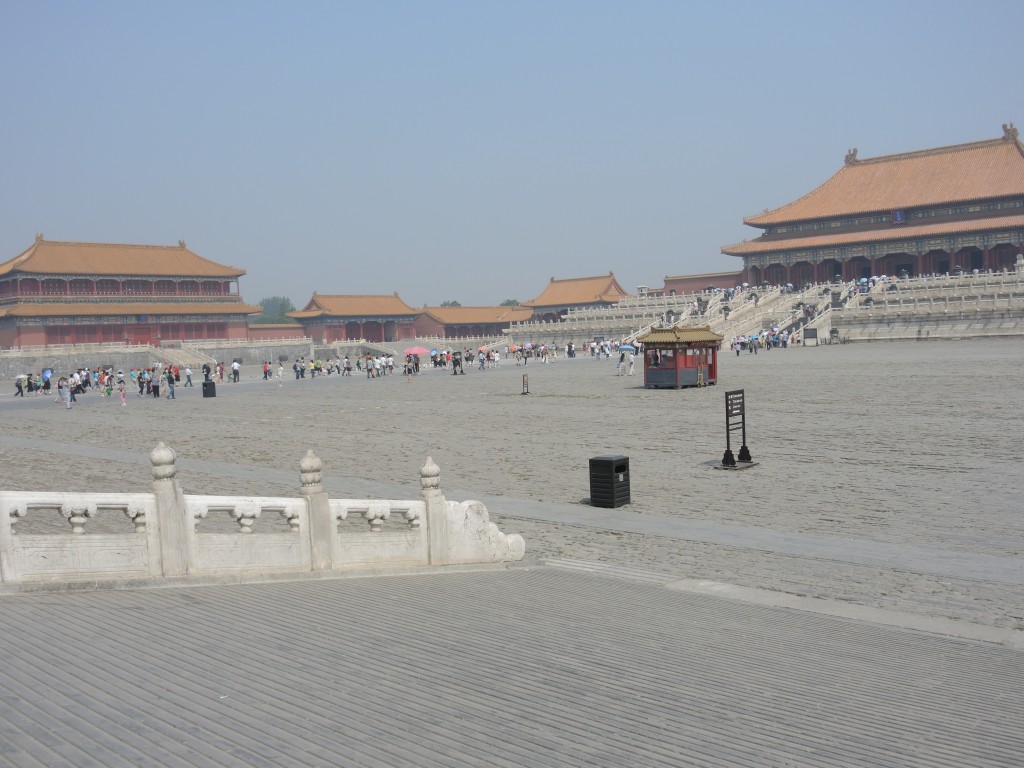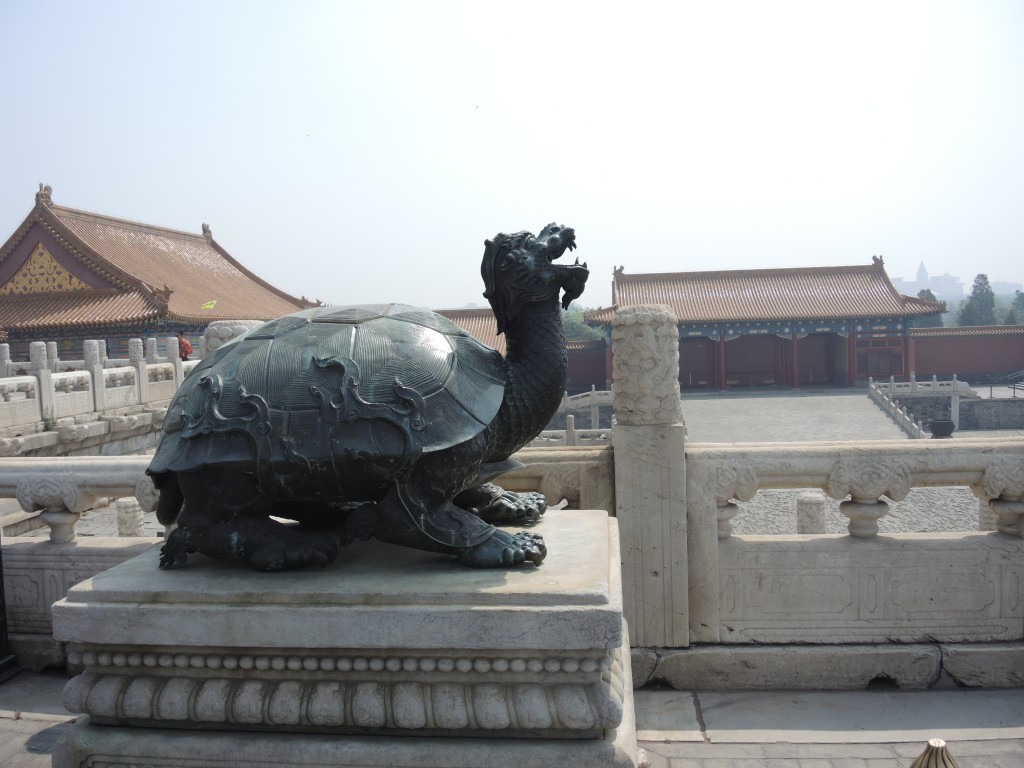Monday 3 June
As promised, we had an early start today. (Tomorrow’s will be even earlier.) We met in the lobby at the appointed time of 07:30 and tromped around the corner as a troupe to grab some breakfast at a bakery – one of the places I’d spotted in my meanderings yesterday. After breakfast, it was back to the hotel to meet our local guide. Groud introduced him as Kevin but I’d later learn that his name is Wong Pying (and he would later tell me that my Chinese name could be Ka Duah). However, for purposes of brevity and convenience, I will refer to him as Kevin.
Kevin took us by Metro to Tienanmen Square and it was here that we got our first exposure to China’s security obsession. If you’re carrying a bag and want to enter a Metro station, you must put your bag through an x-ray scanner. Additionally, access isn’t easy. You have to walk down the steps. Many stations have escalators but they only go up. On the other hand despite these minor inconveniences (major if you’re physically challenged), the Metro is absurdly cheap – 2 yuan anytime anywhere – that’s less than fifty cents per trip. At 1 yuan per ride the buses are even cheaper!
When we reached the Square, our bags were again x-rayed before we gained entry. We entered the square from the south end. The picture below is merely the south section of the square looking from west to east.  At 44 hectares (about 109 acres since I didn’t provide this in the initial conversion post) Tiananmen is among the largest city squares in the world and can accommodate over 1,000,000 people. It was designed and built in the middle of the 17th century and is four times larger today than its original configuration. The gate tower on the right of the picture was the southern entrance to the Imperial City. If I noted his explanation properly, the Imperial City housed granaries, temples, and high officials of the empire. The Forbidden City housed the Emperor, his concubines, and immediate family only.
At 44 hectares (about 109 acres since I didn’t provide this in the initial conversion post) Tiananmen is among the largest city squares in the world and can accommodate over 1,000,000 people. It was designed and built in the middle of the 17th century and is four times larger today than its original configuration. The gate tower on the right of the picture was the southern entrance to the Imperial City. If I noted his explanation properly, the Imperial City housed granaries, temples, and high officials of the empire. The Forbidden City housed the Emperor, his concubines, and immediate family only.
A flaw of tours like this that would manifest itself repeatedly throughout, is that the local guides are hired for a fixed time and specific destinations. As a result, the tour goes something like this: The guide takes the group to a specific place, say the south end of Tienanmen Square. He (or she) pours out a rapid-fire litany of facts that, if you’re a bit obsessive like me, you try to capture with notes or that you forget relatively quickly. The guide then sends you off for 10 minutes of picture taking before you reconvene to move on to the next spot on the tour where you repeat the process. The flaw is inherent in the structure and does not lie with the guides.
We passed through the square from south to north toward the Tienanmen Gate also known as the Gate of Heavenly Peace that serves as the south entrance to another section of the Imperial City and closer to the Forbidden City. The photos you see here follow that progression. As we walked through the square, the presence of uniformed police was eminently noticeable. Noticeable too  are the omnipresent security cameras on nearly every light post. And passing through Tienanmen Gate meant yet another x-ray of our packs.
are the omnipresent security cameras on nearly every light post. And passing through Tienanmen Gate meant yet another x-ray of our packs.
Remember that the Imperial City housed the court while the Forbidden City housed only the royal family. This was no small feat as some emperors had as many as 3,000 concubines. Thus, you can imagine that the Forbidden City is no small place.  You should also know that each of these women had her own quarters and the emperor, who had no official bedroom of his own, slept with a different one each night. This was intended to decrease the possibility of his assassination as well as the likelihood that one of the wives could bear a child not the emperor’s. This passageway led to some of those quarters.
You should also know that each of these women had her own quarters and the emperor, who had no official bedroom of his own, slept with a different one each night. This was intended to decrease the possibility of his assassination as well as the likelihood that one of the wives could bear a child not the emperor’s. This passageway led to some of those quarters.
You can find more pictures inside the Imperial and Forbidden Cities here.
We had a free afternoon that Erin, and Rosemary, and I chose to spend at to the Summer Palace and I’ll recount that in the next post. However, before we leave the Forbidden City, I must remind that even here you must:
FEAR THE TURTLE!

did you have any opportunities to talk to local people? To get any feedback or flavor of the post Tienanmen Square China? We in the west were so struck by the iconic student vs tank photo that captured such a historical moment for that country. I was just curious to know if it is present for the current day citizens as well.
In the little interaction I had, I got the sense that the protest is history. But I’m just not sure how openly people will discuss these things. I’m fairly certain there was a plain clothes presence in the Square as well as the cameras and the uniformed presence.
Great pictures Todd. I would not have liked walking on all of those cobble stones.
Did you agree with the 4 star bathroom rating?
Can’t wait till tomorrow’s post!
Rosemary was the only one to test it out and she didn’t seem to find it exceptional.
I am loving this! I so wanted to go to China last year- so you are helping me visit China!
That fog is really impressive!!!
Smog not fog!